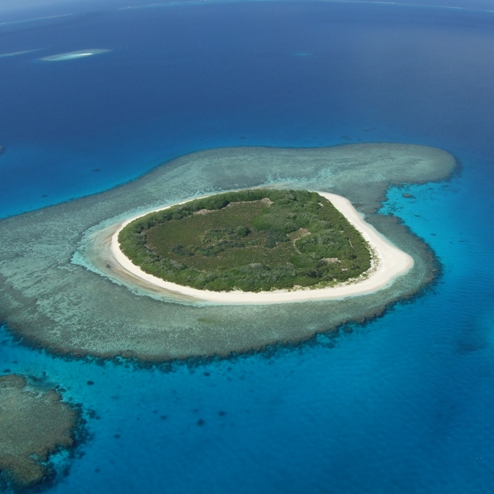New World Heritage Sites for the Pacific
Twenty-seven new sites have recently been added to the internationally recognised World Heritage List, including three sites in the Pacific: Chief Roi Mata's Domain (Vanuatu), the Kuk Early Agricultural Site (Papua New Guinea) and the Lagoons of New Caledonia (France).

Photo: IUCN - Dan Laffoley
By adding these sites to the list, the UNESCO World Heritage Committee has recognised these sites as places of outstanding natural and cultural heritage value. Inscription of sites on the World Heritage List is a major drawcard for tourism, and allows governments to access financial and technical support to ensure the long-term protection of these precious places.
The Lagoons of New Caledonia are one of eight new natural heritage sites that have been added to the World Heritage List, following IUCN’s recommendations.
“These eight stunning natural sites are amongst the best of what nature has to offer,” says David Sheppard, Head of IUCN’s Protected Areas Programme. “Each site has been carefully inspected by IUCN and thoroughly deserves a place on the prestigious World Heritage List.”
The Lagoons of New Caledonia comprise six marine clusters that represent the main diversity of coral reefs and associated ecosystems in the French Pacific Ocean archipelago of New Caledonia and one of the three most extensive reef systems in the world. The lagoons feature an exceptional diversity of coral and fish species and a continuum of habitats from mangroves to seagrasses with the world’s most diverse concentration of reef structures. The Lagoons of New Caledonia display intact ecosystems, with healthy populations of large predators and a great number and diversity of big fish. They provide habitat to a number of threatened fish, turtles and marine mammals, including the third largest population of dugongs in the world. These Lagoons are of exceptional natural beauty and contain reefs of varying age from living reefs to ancient fossil reefs, providing an important source of information on the natural history of Oceania.
Chief Roi Mata’s Domain is the first site to be inscribed in Vanuatu. It consists of three early 17th century AD sites on the islands of Efate, Lelepa and Artok associated with the life and death of the last paramount chief, or Roi Mata, of what is now Central Vanuatu. The property includes Roi Mata’s residence, the site of his death and Roi Mata’s mass burial site. It is closely associated with the oral traditions surrounding the chief and the moral values he espoused. The site reflects the convergence between oral tradition and archaeology and bears witness to the persistence of Roi Mata’s social reforms and conflict resolution, still relevant to the people of the region.
Kuk Early Agricultural Site consists of 116 ha of swamps in the southern highlands of New Guinea 1,500 metres above sea-level. Archaeological excavation has revealed the landscape to be one of wetland reclamation worked almost continuously for 7,000, and possibly for 10,000 years. It contains well-preserved archaeological remains demonstrating the technological leap which transformed plant exploitation to agriculture around 6,500 years ago. It is an excellent example of transformation of agricultural practices over time, from cultivation mounds to draining the wetlands through the digging of ditches with wooden tools. Kuk is one of the few places in the world where archaeological evidence suggests independent agricultural development and changes in agricultural practice over such a long period of time.
About IUCN’s World Heritage work
IUCN undertakes technical evaluations of the natural values of the sites nominated for inscription on the World Heritage List and has evaluated several hundred nominated sites. Further information on IUCN’s World Heritage work is available at http://cms.iucn.org/about/union/commissions/wcpa/index.cfm.
Additionally, each year IUCN reports to the World Heritage Centre on the conservation status of certain natural and mixed World Heritage sites under threat. IUCN’s assessments on what is happening in World Heritage sites are derived from a variety of sources: IUCN members, indigenous peoples groups, the scientific community, experts from IUCN commissions and concerned individuals and organizations.



